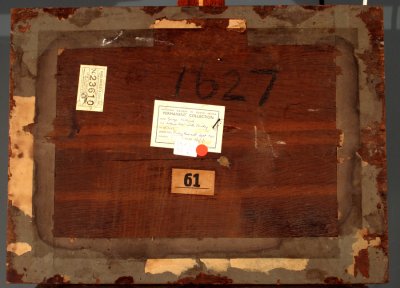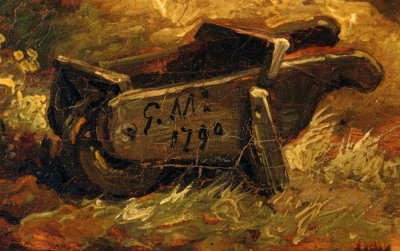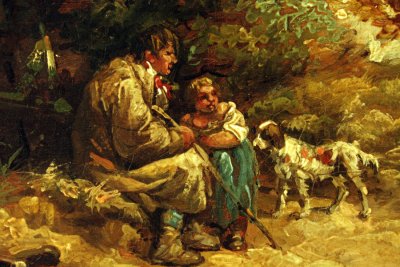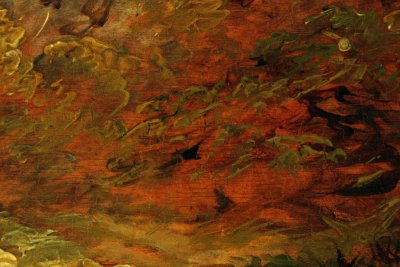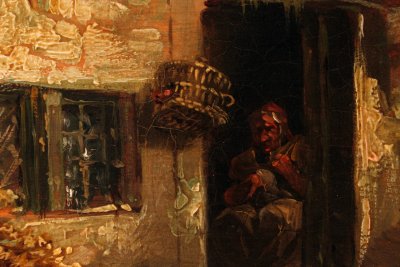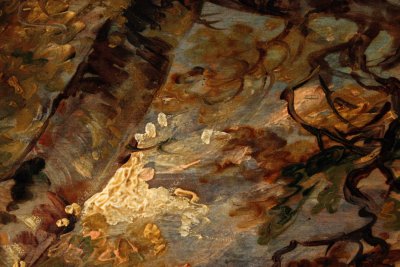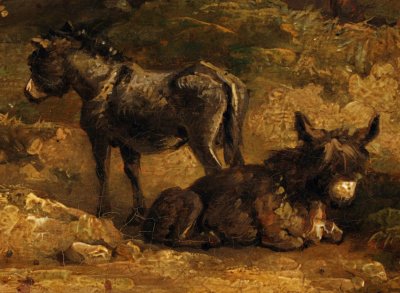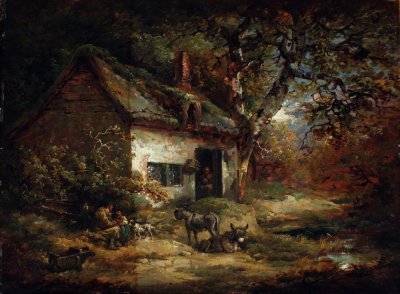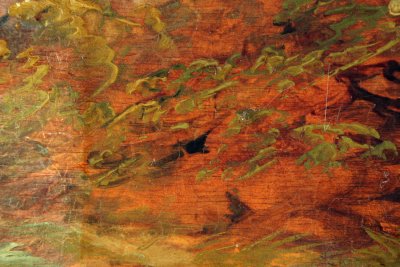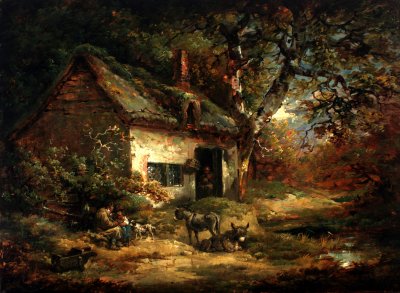TITLE:
Cottage door with donkey
TECHNIQUE: Oil on canvas
SIGNATURE: G.M. 1790, bottom left corner
DIMENSIONS: 450 x 610 mm
FRAME: Wooden, gesso moulded, gilded gold
TREATMENT: October β December 2007
CONDITION REPORT
PRIMARY SUPPORT
The primary support is an oak panel, made of two parts, with the join in the middle. The overall condition is good.
A label placed diagonally on the back, reads:
βJames Bourlet & Sons, Ltd.,
Fine Art Packers, Frame Maker
C 23863
17 & 18, Nassau Street,
Mortimer Street, W.
Phone;- Museum 1817 & 7588β
The label is printed in black ink on paper-pulp paper.
A second label reads,
β61β and this is horizontally placed in the centre. This label is also printed in black ink on a paper-pulp support.
GROUND
The ground appears to be off-white in colour and in a sound condition.
PAINT LAYER
The artist has applied the paint in glazes with a medium added to the paint layer. Areas of impasto can be seen in the highlights. Due to the addition of the medium, extensive drying cracks can be seen, particularly in the dark areas. A fine age-crack pattern can also be seen in a number of localized areas.
VARNISH LAYER
The natural resin varnish layer is discoloured and a layer of surface dirt covers this. This is not the original varnish. Under UV light it appears to be thickly applied, masking the image and the retouchings do not appear separately.
TREATMENT CARRIED OUT
- Photographic record was taken and this was maintained throughout the treatment.
- Tests were carried out to remove the surface dirt. After the appropriate reagent was found, cleaning proceeded safely and effectively. Cleaning proceeded using a swab stick.
- Following tests, including a safety margin-cleaning test, an organic solvent was found to remove the discoloured varnish layer safely and effectively. Cleaning proceeded using a swab stick.
- An isolating brush conservation varnish was applied.
- The losses in the areas of the drying cracks were retouched and a final conservation was applied.
- Frame: Loose parts were re-adhered. The front and back of the frame were cleaned and gold over-paint removed. Losses were filled, textured and sealed. Retouching completed the treatment to the frame and the painting was secured in the frame using brass plates.
